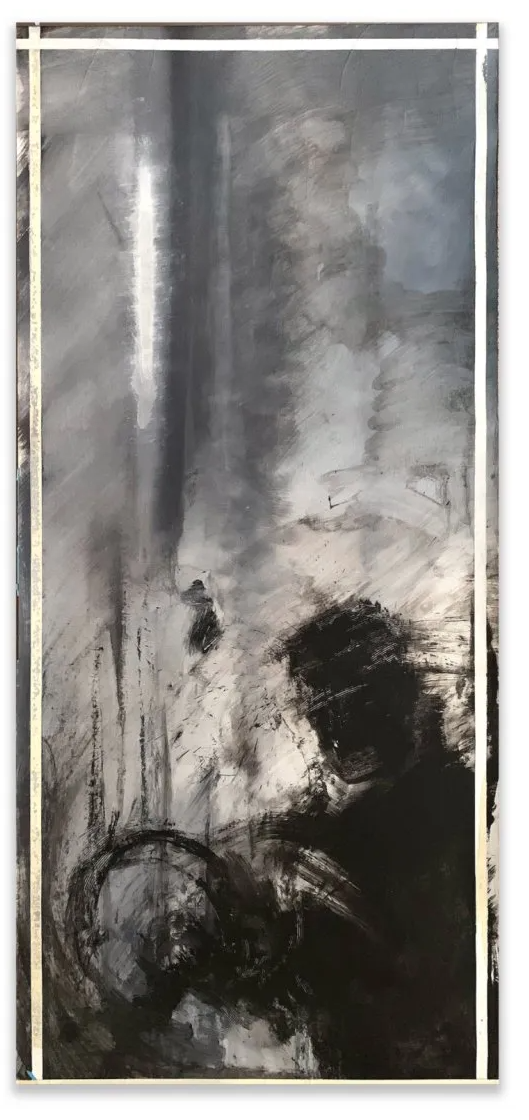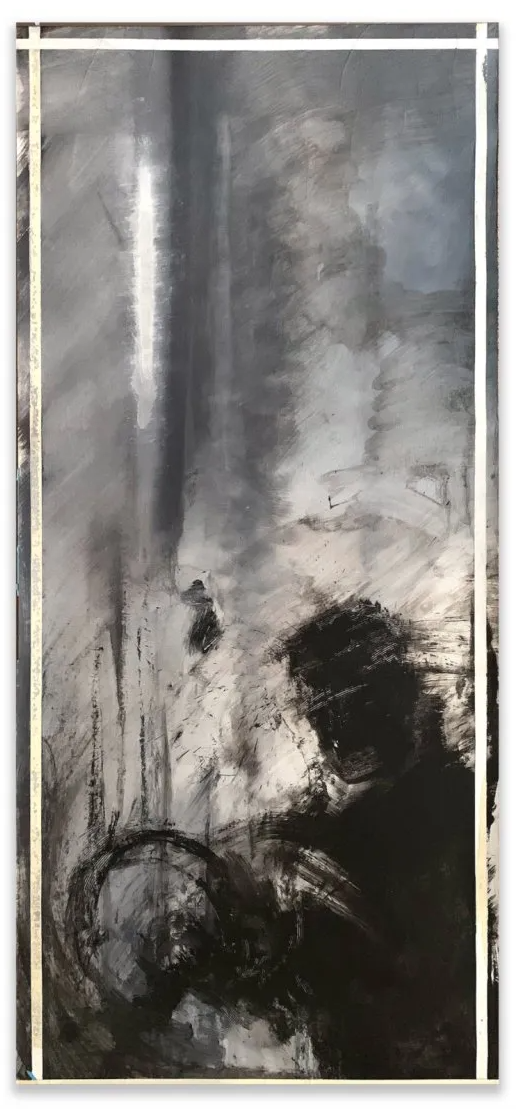
Ghost

Richard Hambleton Shadow Original Acrylic Painting by Richard Hambleton
Shadow Original Acrylic Painting by Richard Hambleton One of a Kind Artwork on Fine Art Paper by Street Art Pop Artist. 1983 Unsigned with COA From Robert Murphy Acrylic & Masking Tape Painting Original Artwork Size 33x76 Frame 37.75x80 Richard Hambleton's "Shadow": A Street Art Phenomenon The legacy of Richard Hambleton, a pioneering figure in the street pop art and graffiti artwork movement, is deeply enshrined in the "Shadow Original Acrylic Painting," a powerful example of his innovative spirit. Known for his stark, shadowy figures that seem to leap off urban surfaces, Hambleton's work has shaped the course of street art and significantly impacted the larger contemporary art scene. His 1983 "Shadow" is a testament to this influence, rendered in acrylic and masking tape on art paper, its paper size stretching to approximately 76 by 33 inches. The larger frame size of 80 by 37.75 inches provides an almost life-size experience, asserting a formidable presence reminiscent of the figures that Hambleton famously painted in alleyways and building sides. The fact that this particular piece is unsigned only adds to the mystique that Hambleton cultivated throughout his career. Provenance is crucial for artworks of such caliber, and this piece's authenticity is backed by a hand-written Certificate of Authenticity (COA) from Robert Murphy and another COA from Dirtypilot, grounding it firmly in its historical context. Robert Murphy and the Provenance of a Masterpiece Robert Murphy, a close friend of Richard Hambleton and an ardent supporter, plays a crucial role in the story of "Shadow." As the most prominent collector of Hambleton's works, Murphy's connection to the art is not merely that of a collector but also that of a confidant and advocate. His relationship with the artist grants the artwork an additional layer of depth, highlighting the personal connections and friendships that often underlie and, indeed, define the street art community. This relationship is immortalized in the feature film "Shadowman," where both Hambleton and Murphy feature, providing a cinematic glimpse into the artist's life and works. Such a connection enriches the narrative of the "Shadow," situating it within a fabric of personal histories that span beyond visual art. It serves as a poignant reminder that the value of street pop art extends beyond the physical work and into the realm of personal and communal histories. Legacy of Hambleton and His "Shadows" in Street Pop Art Within the pantheon of street pop art, Richard Hambleton's contributions stand out for their haunting simplicity and emotional depth. Born in Canada and having passed away in 2017, Hambleton's legacy continues through pieces such as "Shadow," which encapsulate his distinctive approach to street art. His shadow figures, which first appeared in the 1980s, brought a new level of critical engagement to graffiti, transforming it from an act of rebellion into a form of profound artistic expression. "Shadow Original Acrylic Painting" is an original piece from one of the seminal figures in street pop art and a witness to the era in which it was created. The early 1980s saw a dynamic growth in graffiti artwork, evolving from vandalism to a respected medium of socio-political discourse and artistic exploration. Hambleton's work cuts through this moment in history, offering a spectral yet profound critique of society and the self, asking the observer to confront the shadows that linger within urban life and themselves. The story of Richard Hambleton's "Shadow" is a narrative woven from threads of creative genius, personal bonds, and the shifting ethos of street art. This piece remains a vibrant component of Hambleton's oeuvre, a silent yet eloquent sentinel testament to the power of street pop art and graffiti artwork in shaping urban landscapes and discourse.
$75,000.00


